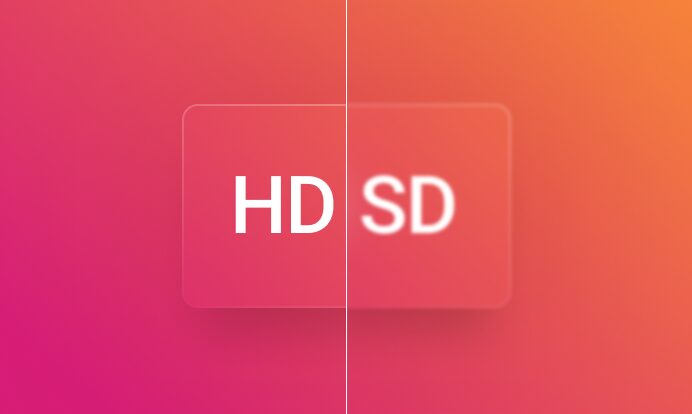Video Streaming Analytics and the Difference Between SD vs HD: What You Need to Know

In today is digital-first world video content is king especially in education entertainment or enterprise communication. As platforms scale to deliver video across multiple regions and devices, two crucial concepts come into play: video streaming analytics and the quality resolution of the content, such as SD vs HD.
Understanding how your viewers engage with your videos and how video resolution impacts their experience is essential for both technical teams and business strategists. In this article, we’ll break down both topics and how they are interconnected in delivering optimal video performance.
Video streaming analytics refers to the collection and analysis of viewer data related to video playback. This data helps platform owners understand how users interact with videos, what devices they use, how much content they consume, and where issues like buffering or dropout occur.
Key metrics in video streaming analytics include:
- Watch Time: Total duration users spend watching a video.
- Viewer Drop-off Rate: When and where viewers stop watching.
- Buffering Events: Frequency and location of playback interruptions.
- Device and Browser Data: Insights on what platforms users prefer.
- Playback Resolution: Which quality levels (SD, HD, 4K) are being played by each viewer.
- Geo-Location: Where your audience is coming from.
- Playback Errors: Technical issues preventing video delivery.
By using advanced analytics, platforms can optimize the user experience, reduce churn, and even identify piracy behavior (such as abnormal viewing from multiple IPs).
Why Analytics Matter in Video Strategy
Whether you’re running an OTT service, an e-learning platform, or a virtual event platform, video streaming analytics gives you the real-time insights needed to improve:
- Quality of Experience (QoE): Identify which users experience frequent buffering or low playback quality and adapt delivery accordingly.
- Content Performance: Know which videos are performing best and what drives engagement.
- Audience Segmentation: Tailor content recommendations and marketing based on viewer behavior.
- Security and Compliance: Detect suspicious access patterns that may indicate password sharing or piracy.
With integrated analytics dashboards and custom reports, you can make data-driven decisions to scale securely and efficiently.
SD vs HD Video: What’s the Difference?
Now let’s shift focus to another important aspect of video streaming: resolution quality—commonly categorized as SD (Standard Definition) and HD (High Definition).
What is SD (Standard Definition)?
It’s lighter on bandwidth, loads faster, and is suitable for mobile viewers or users with slower internet connections.
Pros:
- Lower data usage
- Faster loading
- Ideal for low-end devices or limited networks
Cons:
- Lower visual clarity
- Not suitable for detail-rich or professional content
What is HD (High Definition)?
HD video usually refers to 720p or 1080p resolutions. HD delivers sharper images, better text readability, and a more immersive viewing experience.
Pros:
- Crisp, professional look
- Better for larger screens and presentations
- Preferred for entertainment and educational content
Cons:
- Higher bandwidth consumption
- May cause buffering on slow connections
How Analytics and Resolution Intersect
A well-optimized video platform uses adaptive bitrate streaming—which means serving SD or HD versions of the same video based on each viewer’s internet speed and device capability.
Here’s where analytics become vital:
- Identify Resolution Trends: Know what percentage of your users watch in SD vs HD.
- Improve Load Time and Retention: Spot when viewers drop off due to poor quality and fix issues proactively.
- Enable Smart Recommendations: Suggest SD or HD versions based on the user’s past behavior and device.
Combining streaming analytics with resolution data allows content providers to offer seamless and personalized experiences—whether it’s an HD movie night or an SD-compatible course module.
In the competitive world of video content delivery, knowing how your content performs and in what quality it reaches users is not optional—it’s essential.
By leveraging video streaming analytics, you gain real-time visibility into performance and viewer behavior. And by understanding the dynamics of SD vs HD video, you can optimize delivery to suit every viewer’s environment—enhancing satisfaction and retention.
Whether you’re managing an OTT platform, educational LMS, or enterprise video portal, the blend of analytics and quality control can become your competitive edge.

Source: Video Streaming Analytics and the Difference Between SD vs HD: What You Need to Know




